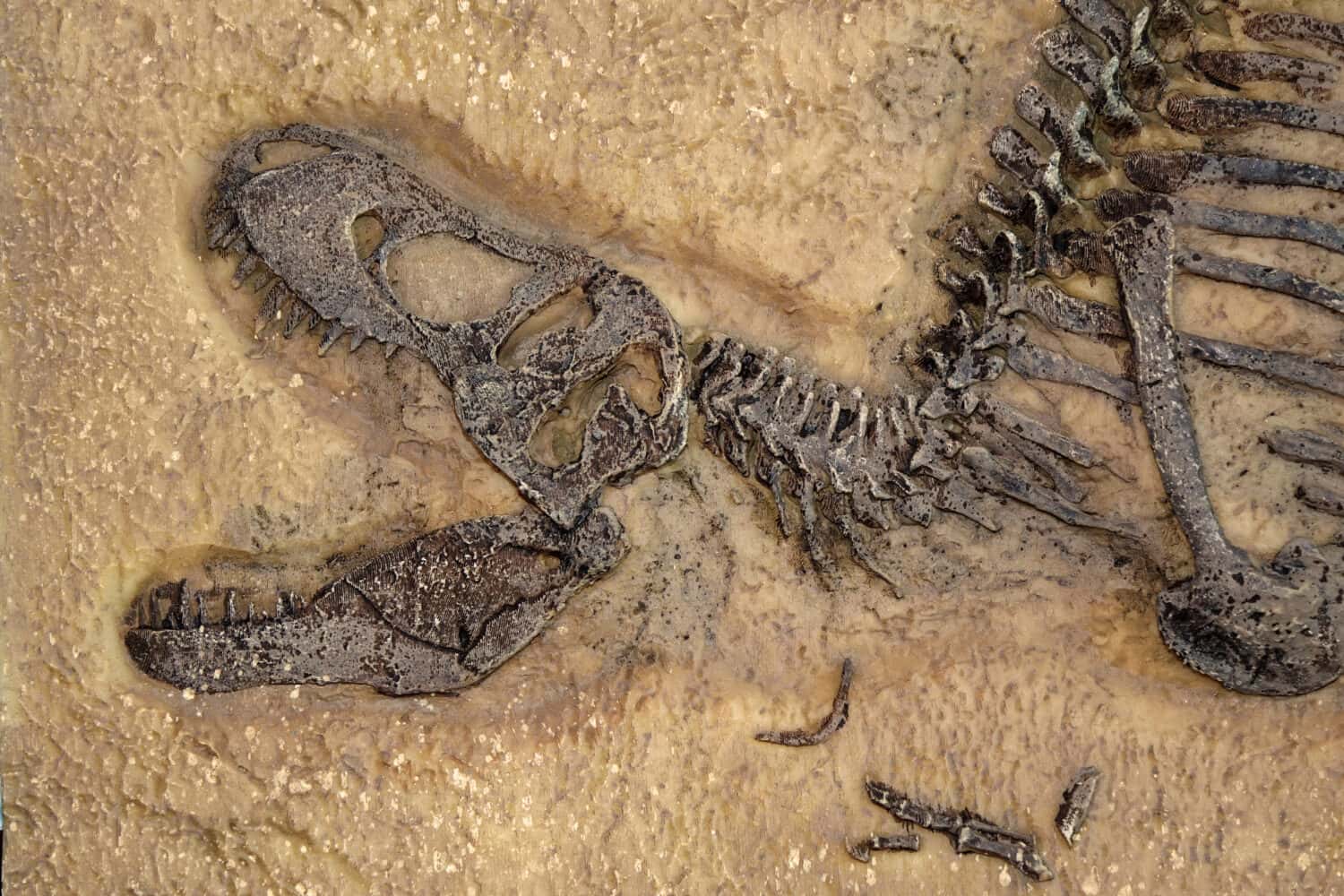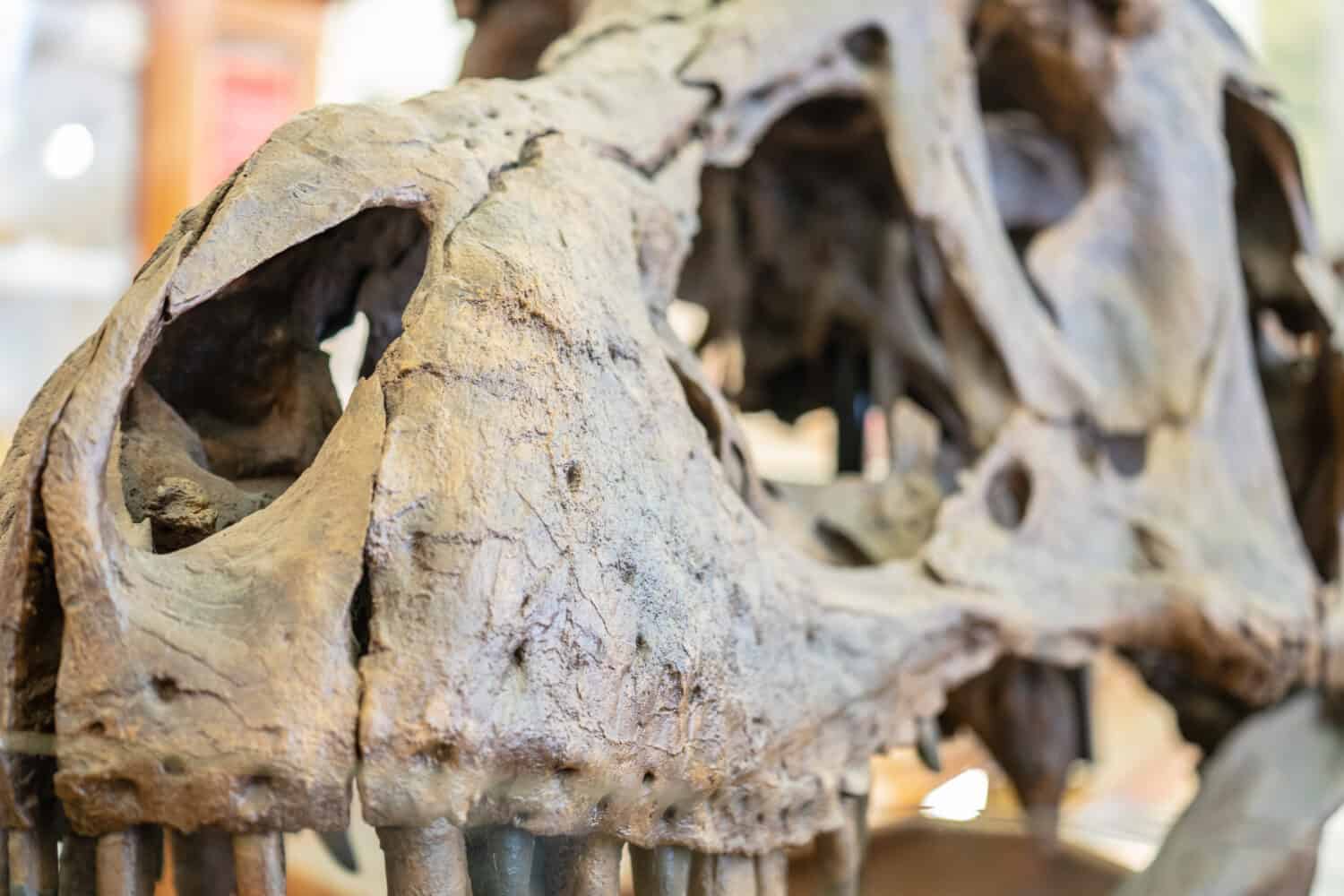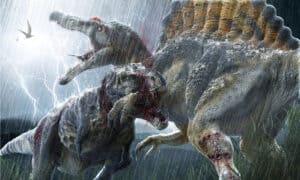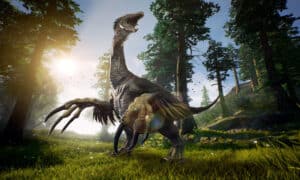- The largest T-Rex specimen ever uncovered Is 42 feet long and weighs several tons.
- This specimen is on display at the Royal Saskatchewan Museum.
- The process of determining a dinosaur’s size is often based on extrapolative science.
No dinosaur has quite captured the imagination of the public like Tyrannosaurus Rex – it’s arguably the most iconic of its kind.
T-Rex was a carnivorous bipedal behemoth that “ruled the earth” over 365 million years ago in the Cretaceous age of the dinosaurs. Because of its ferocity and size, the dinosaur has become a fixture in contemporary pop culture, appearing in dozens of movies, books, and TV shows.
Scientists have uncovered the skeletons of many of this species of dinosaur over the decades, but one stands above the rest. It even has a name – Scotty. Scotty is what scientists call the skeleton of the largest T-Rex that’s been unearthed yet. Here is some information about this truly massive example of its kind.
T-Rex Facts

Scotty’s remains were uncovered during a Paleontological dig in Canada.
©Mark Brandon/Shutterstock.com
T-Rex was an apex predator of the Late Cretaceous period that lived up to approximately 66-68 million years ago. It existed in what is now western North America. At the time, this land area was part of a continent known as Laramidia.
T-Rex is notable for its powerful and humongous jaws and head. These body parts carried with them the distinction of the most powerful bite in the animal kingdom for its time. T-Rex is one of the largest carnivorous animals known to science; however, it does have its rivals. Certain carnivores of the time, such as Spinosaurus (S. aegyptiacus), rivaled T-Rex in size.
One of T-Rex’s most iconic features is its tiny forearms, which stand out conspicuously in comparison to the rest of its body. To this day, the evolutionary path which led to this development remains a mystery.
The evidence suggests that T-Rex fed on many of the larger herbivores that populated the Cretaceous landscape, such as Hadrosaurs and Ankylosaurs. However, many reputable scientists believe that T-Rex was a scavenger. The debate over its predatory nature has raged for decades.
Nowadays, the general scientific consensus is that T-Rex was both a scavenger and an active predator. It likely changed its behavior depending on the context and individual. This logic generally tracks the behavior of most apex predators of our current era.
Scotty’s Stats
Scotty was unearthed by paleontologists in the Canadian province of Saskatchewan. Currently on display at the Royal Saskatchewan Museum, this dinosaur was gigantic, practically in a class of its own.
From nose to tail, Scotty is approximately 42 feet in length – longer than the length of a large sailboat. Scientists estimate that while he was alive, Scotty weighed approximately 19,555 pounds. This is nearly the weight of four large pick-up trucks.
Scotty also holds the distinction of being an unusually long-lived example of his species. Although the evidence holds that he died violently (his skeleton shows indications of broken ribs and an infected jaw), Scotty was able to reach his early 30’s. This is quite venerable for a T-Rex.
The excavation process for recovering Scotty’s bones began in 1991. However, it was only in 2019 that paleontologists fully recovered what could be found of him. Scotty is considered to be a fairly complete dinosaur skeleton, with over 65% of his remains intact.
Scotty’s advanced age has aided scientists in their quest to understand more about dinosaurs. Because he was so large, it has led some to believe that most of the T-rexes found thus far were immature. Because of this, scientists are beginning to think they are not fully representative of the size potential of these massive dinosaurs.
How Do Scientists Determine A Dinosaur’s Size?
Determining a dinosaur’s size involves a lot of guesswork from those who are studying it. Or rather, educated inference. Many of the dinosaur skeletons that are recovered in the field are only partially intact. This means that when scientists are attempting to make guesses about how large a dinosaur is, they might be extrapolating from just a hip bone, or another piece of the skeletal structure.
Scotty is an example of a dinosaur where scientists are making their best guess about the total dimensions of the dinosaur’s figure. This is because he was recovered only as a partial skeleton. Determining exactly what constitutes the “biggest” T-Rex is something of an imperfect process. In many cases, some of the dinosaurs of this species are longer than the ones with the most girth, and so on.
However, in Scotty’s case, he is both the longest and the heaviest Tyrannosaur ever recorded. His mass is truly beyond the competitors.
Usurping Sue

T-Rex’s powerful jaws had the strongest bite ever recorded in the animal kingdom.
©Powerofflowers/Shutterstock.com
The previous record-holder for the largest T-Rex ever found was Sue. Sue was unearthed in the 1990s and is overall a much more complete skeleton than Scotty. Over 90% of Sue’s total skeletal structure is successfully on display at the Field Museum of Natural History in Chicago. This makes her one of the most complete Tyrannosaurus Rex skeletons ever found.
There is some controversy over whether or not Sue might be larger than Scotty. Overall, there’s more hard evidence about the actual size of Sue since her skeleton is more intact than Scotty’s. However, the reasoning that led experts to believe that Scotty is the larger dinosaur has a strong foundation in the scientific method.
The primary method used to determine Scotty’s size dominance over Sue was by measuring the size of his intact femur and hip bone. From there, they make an educated guess at how big the rest of the dinosaur was based on the size of these aspects of its body. The reason that they can do this is partially due to fundamental physics. If a hip bone is of a certain size, then it should only be able to support weight up to a certain point.
Once the dinosaur skeleton is assembled as much as possible, scientists proceed to fill in the blanks with life-like recreations of the missing bones. This is why most of the dinosaur skeletons you see in museums appear complete, even if they’re not.
Where to See Scotty
Scotty’s skeleton is on display at the Royal Saskatchewan Museum in Eastend, Saskatchewan, Alberta. There, Scotty towers over part of the museum’s Paleontology exhibit. You can go and visit this awe-inspiring specimen whenever the museum is open.
The photo featured at the top of this post is © iStock.com/Emissary_Filmworks
Thank you for reading! Have some feedback for us? Contact the AZ Animals editorial team.







